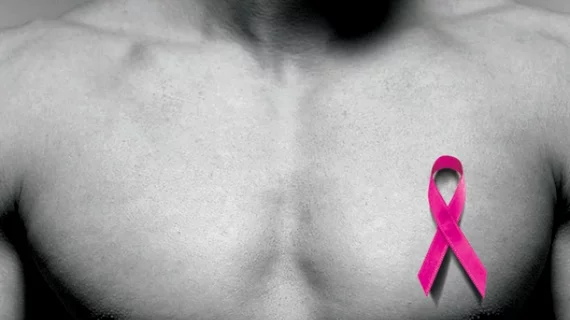Male breast cancer is rare, making up less than 1 percent of all breast cancers. However, radiologists and all imaging professionals must have as much up-to-date information on the detection and treatment of male breast cancer as possible.
A new article published in Current Problems in Diagnostic Radiology provided readers with a valuable, in-depth collection of information about breast disease in men, including male breast cancer. These are four key takeaways from the study that radiologists need to know:
1. Care recommendations for male patients presenting with symptoms
“Because the incidence of male breast cancer is low, no screening program exists,” wrote lead author Allyson L. Chesebro, MD, with the department of radiology at the Boston University School of Medicine, and colleagues. “Therefore, all male breast imaging is diagnostic and performed on symptomatic patients.”
When male patients present with standard symptoms associated with gynecomastia or pseudogynecomastia, no imaging is necessary. Gynecomastia is benign and the single most common male breast abnormality. Also, if mammography ever reveals that a male patient has gynecomastia, ultrasound follow-up imaging is not needed.
If the patient is younger than the age of 25 and presents with “an indeterminate breast mass,” however, targeted ultrasound is recommended. If the ultrasound finds something suspicious, the next step is mammography. If the patient is older than 25, care should begin with mammography.
“When breast cancer is suspected based on physical examination, imaging should begin with bilateral mammogram and then proceed to targeted ultrasound,” the authors added. “Ultrasound is helpful in further characterization of mammographic findings and in guiding biopsy of suspicious findings. Breast magnetic resonance imaging is usually not appropriate in the evaluation of male breast disease, as the data to support its clinical use and accuracy are limited.”
2. Risk factors associated with male breast cancer
In the study, Chesebro and colleagues detailed some of the many risk factors associated with the development of breast cancer.
“The well-established risk factors for breast cancer include age, race, family history/genetics, abnormal estrogen-to-androgen level, and radiation exposure,” the authors wrote. “Similar to female breast cancer, the incidence of male breast cancer increases with age. At all ages, black men have an increased incidence of breast cancer compared to white men, 1.8 per 100,000 versus 1.1 per 100,000.”
Also, approximately 10 percent of male breast cancer patients having a genetic predisposition, and patients with BRCA2 gene mutations are more likely to develop male breast cancer than patients with BRCA1 gene mutations. Klinefelter syndrome also significantly increases a man’s risk of developing breast cancer.
3. Treatment options for male breast cancer
The authors explained that treatment options for male breast cancer include surgery radiation therapy and systematic therapy. “Due to limited data, treatment recommendations are often extrapolated from studies of female breast cancer,” they wrote.
4. Imaging recommendations for transgender patients
“Radiologists and other physicians caring for transgender patients must be aware of the risk of breast cancer in this population and the appropriate breast cancer screening guidelines,” the authors wrote.
For female to male (FtM) transgender patients who have not undergone mastectomy, the mammographic screening recommendations remain unchanged. After the patient has undergone mastectomy, however, the authors explained that “medical providers should perform yearly chest and axillary examinations because residual breast tissue may be present.”
For male to female (MtF) transgender patients, mammographic screening is recommended for patients beginning at the age of 50 with more than five years of cross sex hormone therapy (CSHT).
CSHT results in the growth of breast tissue, and that tissue is often heterogeneously dense, Chesebro et al. added.
“The mammographic appearance of breast tissue in MtF transgender patients undergoing CSHT should not be called gynecomastia, as the breast tissue contains lobules and is similar to natal female breast tissue,” the authors wrote. “Therefore, development of lobular pathology rarely seen in natal males, such as cysts and fibroadenomata, can occur.”
In addition, if a MtF transgender patient chooses to get breast implants, “evaluation of implant integrity is the same as for natal female patients.”

